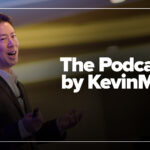In Minot, I practiced a kind of pediatrics no flowchart could predict: improvised, airborne, and often surgical. Minot didn’t always follow the flowchart. One night, a toddler arrived in the emergency room, inebriated. Her father had given her vodka for teething pain, never imagining she’d swallow it. She did. She stopped breathing. I called a code and began CPR, ordering a blood alcohol level (BAL) and routine labs. Her BAL revealed a level three times the legal limit for driving. Thankfully, she began breathing on her own, but the ordeal resulted in her father’s arrest for child endangerment.
One month later: head circumference and shaken baby syndrome
A month later, another child returned for a nine-month well child check with a head circumference that had crossed three percentile lines (isobars), a red flag. After admitting her to the intensive care unit, her mother confided to the head nurse that she suspected her husband had violently shaken her daughter. The father claimed he had taken the child to a private pediatrician, whose records confirmed an alarming increase in head circumference starting at four months of age. An X-ray revealed bilateral subdural hematomas consistent with shaken baby syndrome. Recognizing the urgency of the situation, I contacted my superiors and arranged transportation via Learjet C-21 to Fitzsimmons Army Medical Center in Denver, Colorado.
During the flight, I faced a challenge when I lost access to IV fluids but managed to reestablish an IV midair. Upon arrival, an Army neurosurgeon congratulated me on my expert care, a validating moment after the intensity of the emergency. That evening, as I unpacked at the visiting officers’ quarters, I discovered a small white teddy bear Kathy had tucked into my travel bag. It was such a quintessential Kathy gesture, one that brought warmth and humor into even the most stressful days.
Another critical case involved an infant diagnosed with a single ventricle. Though pulse oximetry readings in the nursery appeared normal, the closure of the foramen ovale at his one-week pediatric visit prompted immediate concern. A blood gas test and portable chest X-ray confirmed the findings of a single ventricle, and within minutes, we arranged an emergency air transport to Wilford Hall Medical Center in San Antonio, Texas. This time, the head nurse of the newborn nursery and an experienced pediatric respiratory therapist joined me on the mission. Together, we traveled in the empty cargo compartment of a KC-135 tanker, equipped with a transport bassinet, oxygen tanks, and portable monitors. As we touched down, the monitors had reached their battery life and were nearly dead. Plugged in and recharging, we rushed the infant to “Big Willie,” and the waiting cardiologist.
The cardiac surgeon performed a catheterization within minutes of our arrival, reopening the foramen ovale and stabilizing the infant. The infant would require further surgical interventions to approximate a functional four-chamber heart. The U.S. Air Force reassigned the family to a military medical center through the Exceptional Family Member Program (EFMP), ensuring ongoing care. My superiors later recognized the effort in my Officer Efficiency Report (OER), an acknowledgment of the collaborative success of the mission.
Our return to Minot, however, hit a weather-related snag. Diverting to Ellsworth Air Force Base in South Dakota, we landed due to mandatory crew rest. Taking advantage of the situation, the head nurse ordered a staff car, and I drove us to Mount Rushmore for some sightseeing. The visit was a small but welcome respite, and I couldn’t resist calling Kathy’s mother, Irene, in Connecticut to stir excitement about our unexpected stop. Kathy, too, received information of the delay, ever supportive despite the disruptions.
The flight back to Minot offered an unusual opportunity. During a refueling exercise with a B-52 bomber, the refueling airman let me lie beside him, headphones on my ears, as I listened to the meticulous communication required for aerial refueling. Hearing the B-52 pilot recognize me mid-operation and inquire about his son’s upcoming appointment that day at my clinic was both amusing and surreal. I quickly rescheduled his son’s visit for the next day, a gesture that earned heartfelt thanks from both pilot and wife. Watching the intricate dance between tanker and bomber, an unnatural act akin to whales mating, gave me newfound appreciation for the skill of both crews.
Returning to Minot, I took the jump seat in the cockpit, observing the navigator’s expertise. It was a poignant reminder of my father’s mastery as an Air Force navigator, and explaining my connection to the role brought mutual understanding with the crew. These moments, though fleeting, carried profound significance, bridging personal legacy with professional purpose.
The unexpected surgical assist
The chief of hospital services, Maj. McFly’s mandate was to establish a viable family practice (FP) clinic; empaneling patients for care. His efforts faced immediate resistance. Patient skepticism ran high, and confidence in the new recruits was fragile at best. Competence remained an open question. One FP, barred from wearing the uniform due to morbid obesity, became a reluctant emblem of the clinic’s struggles. Another confided to Kathy that he felt wholly unprepared to treat children or deliver babies.
Kathy’s response was blunt but necessary: “Why, then, did you choose family practice?” Reality does not accommodate delusions of competence. Her remark cut through the illusion, exposing the gap between training and readiness. She later reminded me of a favorite film we both cherished, McLintock!, and McFly’s resemblance to the phrase: “All hat and no cattle.”
John Wayne’s character, George Washington McLintock, had once declared: “Cuthbert H. Humphrey, Governor of our territory, is a cull. Do you know what a cull is, ma’am? A cull is a specimen (of cattle) that is so worthless that you must cut him out of the herd.” McFly, as chief of family medicine, had been handed an entire herd of culls. It wasn’t his fault; it was simply what the U.S. Air Force had assigned him. The one “cull” in pediatrics was the chief: Larry. Leadership was clearly not his strength at the time. Whether he developed those skills later remains unknown, but within months, the hospital commander “threw a rope at him” to cut him out of the herd.
The obese FP’s aversion to blood unexpectedly propelled me into a role I never anticipated. During a C-section, she fainted mid-procedure while serving as first assist. I had been present to tend to the newborn, not to step into a surgical role. Yet, the OB remained unfazed. “Ron, rescrub and get into a surgical gown.” There was no time to hesitate. My task was simple: hold the retractors as the OB worked through layers of tissue. As he repositioned them, demanding precision with each incision, my muscles strained in protest. My biceps burned, my pectorals ached, but I held firm. Finally, the newborn emerged. The OB directed me to loosen my grip, lift the baby, and resume my usual role of wrapping the baby in a towel as he clamped and cut the umbilical cord. I took him to a heated bassinet to do my usual routine.
Later, the OB remarked, “You did a better job than any FP I’ve had. You listened to my orders rather than try to anticipate them.” He assured me the commander would hear of both the FP’s collapse and my decisive response. Despite the commander’s personal gratitude, he deliberately omitted this from my OER, an institutional choice meant to shield the hospital from accountability. However, the experience cemented my reputation among the surgical and nursery staff that they could count on me to do anything possible for the life of a baby, leading to more such assists.
Over time, we devised a coded message for overhead pages whenever that FP was scheduled as first assist: “Wildcat deliveries.” A nod to Don Shula’s bold direct-snap strategy to a running back that had once caught Bill Belichick off guard. Between medical school rotations and these Wildcats, my delivery count quietly climbed to 20; 7 routine, 13 unconventional. I could catch a knuckleball, a rare feat, and a fitting metaphor for the kind of pediatrics I practiced.
Ronald L. Lindsay is a retired developmental-behavioral pediatrician whose career spanned military service, academic leadership, and public health reform. His professional trajectory, detailed on LinkedIn, reflects a lifelong commitment to advancing neurodevelopmental science and equitable systems of care.
Dr. Lindsay’s research has appeared in leading journals, including The New England Journal of Medicine, The American Journal of Psychiatry, Archives of General Psychiatry, The Journal of Child and Adolescent Psychopharmacology, and Clinical Pediatrics. His NIH-funded work with the Research Units on Pediatric Psychopharmacology (RUPP) Network helped define evidence-based approaches to autism and related developmental disorders.
As medical director of the Nisonger Center at The Ohio State University, he led the Leadership Education in Neurodevelopmental and Related Disabilities (LEND) Program, training future leaders in interdisciplinary care. His Ohio Rural DBP Clinic Initiative earned national recognition for expanding access in underserved counties, and at Madigan Army Medical Center, he founded Joint Base Lewis-McChord (JBLM) CARES, a $10 million autism resource center for military families.
Dr. Lindsay’s scholarship, profiled on ResearchGate and Doximity, extends across seventeen peer-reviewed articles, eleven book chapters, and forty-five invited lectures, as well as contributions to major academic publishers such as Oxford University Press and McGraw-Hill. His memoir-in-progress, The Quiet Architect, threads testimony, resistance, and civic duty into a reckoning with systems retreat.



















![Why modern dentists must train like pilots [PODCAST]](https://kevinmd.com/wp-content/uploads/Design-3-190x100.jpg)

![A lawyer’s essential checklist for physician side hustles [PODCAST]](https://kevinmd.com/wp-content/uploads/Design-1-190x100.jpg)
